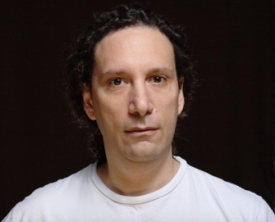
Work by University of Iowa Professor Claudio Margulis and his chemistry research group was named as one of the Journal of Chemical Physics (JCP) Communications’ “most cited and most read” work. JCP Communications are “concise reports of significant, new findings on the cutting edge of chemical physics” that are set to appear in publication.
The published article, “Communication: Nanoscale structure of tetradecyltrihexylphosphonium based ionic liquids,” appeared in the Journal of Chemical Physics in 2016. Jeevapani J. Hettige, Juan C. Araque, Hemant K. Kashyap, and Margulis were its authors.
Abstract:
In a recent communication [J. J. Hettige et al., J. Chem. Phys. 140, 111102 (2014)], we investigated the anomalous temperature dependence of the X-ray first sharp diffraction peak (or prepeak) in the tetradecyltrihexylphosphonium bis(trifluoromethylsulfonyl)-amide ionic liquid. Contrary to what was expected and often observed, the first sharp diffraction peak in this system was shown to increase in intensity with increasing temperature. This implies higher intermediate-range periodicity at a higher temperature. Is this counter-intuitive behavior specific to the combination of cation and anion? The current work analyzes the structural behavior of the same cation coupled with six different anions ranging from the small and spherically symmetric Cl− to the more structurally complex and charge-diffuse NTf2−. In all cases, the same temperature behavior trend for the prepeak is observed independent of anionic nature. We will show that the intensity increase in the prepeak region is associated with the structural behavior of charged liquid subcomponents. Instead, upon a temperature increase, the apolar subcomponents contribute to what would be an expected decrease of prepeak intensity.
Margulis is a professor in the Department of Chemistry, part of the College of Liberal Arts and Sciences.